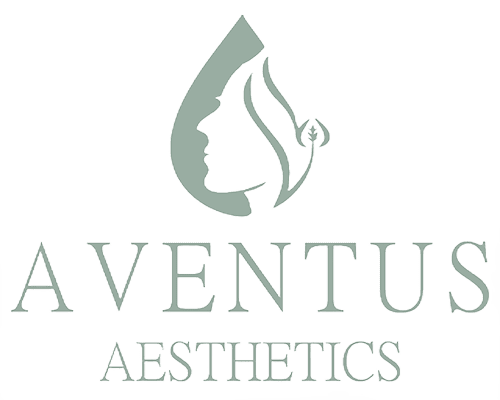Plastic surgery does not imply that surgeons utilise plastic or other artificial materials. The Greek term Plastikos, which implies mold or give form, is the source of the English word plastic. The two types of plastic surgery are reconstructive and cosmetic. Reconstructive procedures are similar to those performed on infants born with cleft lip and palate; they also help wounded veterans in combat. They employ several surgical methods to enhance the look and improve function in the affected areas. Reconstructive surgery on burn victims is another illustration. These are just a few instances of how plastic surgery helps people live better lives.
Cosmetic surgery is another area of expertise for plastic surgeons, who do it for aesthetic reasons. Cosmetic surgery is when a person elects to undergo an operation or invasive medical procedure to alter their physical appearance for cosmetic rather than medical reasons. Dermal fillers and other non-surgical cosmetic procedures like Facial Glow Treatments, frequently used to smooth out or relax wrinkles, are non-surgical.
Are Facial Cosmetic Treatments painful?
Facial cosmetic surgery focuses on enhancing the facial look of the patient. Examples of common surgical treatments include rhinoplasty, blepharoplasty (eyelid surgery), rhytidectomy (facelift), browlift, liposuction, and fat transfer.
Pain based on Surgery Type
We have described how pain is perceived after surgery to comprehend it better. Every surgery has a unique discomfort, recovery times, and potentially painful treatments. Therefore, it is best to be well-versed in everything.
Pain After Rhinoplasty

You’ll likely suffer some little bleeding, bruising, and swelling in the first few days following your rhinoplasty treatment. Every patient has a different tolerance for pain, although most people only experience minimal discomfort following surgery.
Being “bunged up” is more disorienting to most patients. You might have to breathe through your mouth for a few days due to the swelling, which will cause your throat and lips to become dry. Due to the congestion, you could also feel pressure in your ears and head.
Pain After Chin Augmentation

After chin augmentation, minor soreness and discomfort are normal. Painkillers can help control it. An itchy sensation in the chin could last a week. The area can be numb for three weeks.
Additionally, sleep may be disturbed. Elevate your head while you’re sleeping. Use two or three pillows, or raise the bed’s head, as an alternative. Most implants are designed to last a lifetime. On the other hand, implants created from your fat might be reabsorbed. The full results can be seen after three to four months because oedema may last for a few weeks or months.
Pain After Liposuction

You might anticipate some pain and soreness in the initial stages of rehabilitation after liposuction surgery. To help you manage this discomfort, your surgeon will prescribe pain medicine. Make sure to stick to your prescription plan. For these few days, it is advised that you solicit help around the house, especially if you have young children. It would help if you also plan to be less active during this period. Your compression clothing may limit some of your actions, but it’s equally crucial to avoid doing anything unneeded.
Pain After Eyelid surgery

You will have some swelling and bruising for about a week following a blepharoplasty since it involves tightening the muscles and skin above the eyes. If you also have lower eyelid surgery, the discomfort level may increase. But patients are frequently taken aback by how little pain they experience.
These frequently involve fat grafting to restore volume lost under the eyes. In other words, the physician will remove fat from your thigh or stomach and apply around a teaspoon of that fat beneath each eye.
Pain After Facelift Surgery

A facelift, one of the most popular cosmetic procedures, makes patients appear younger by reducing the visibility of wrinkles, fine lines, and other ageing indicators. If you are a patient considering a facelift, you should know how painful the recovery period will be.
To retain the youthful form of your face, procedures like a facelift can help tighten up these muscles to give you a younger appearance and better tone. Patients can anticipate their faces feeling tight, puffy, and bruised after a facelift. There might also be some discomfort and pain, but these are easily treated with painkillers on prescription. You can expect any discomfort to go away in only a few days. Patients can return to regular activities, such as work, in under a week, thanks to typical healing times.
Benefits of Facial Cosmetic treatments
Remove Loose Skin and Wrinkles
Skin loses its elasticity as we age, leading to drooping eyelids, dragging down brows and eyelids, and loosening the jawline. People may appear older and more exhausted than they are due to these effects, which can result in an overall heaviness of the face. Loose skin is eliminated during cosmetic surgery to make a face look younger. The activity of underlying muscles can result in unsightly wrinkles and folds in the skin’s surface that give the face an older appearance. Surface creases and lines can be removed with facial plastic surgery, making you appear more youthful and lively.
Enhances your self-esteem by boosting your look
You should always adore yourself. In actuality, though, we frequently yearn for the affirmation and validation of others we care about, and one thing that wins us their acceptance is our appearance. Scars from acne can become very deep and disturbing.
A similar pattern can be seen in wrinkles, sagging skin, and pigmentations. When they appear, our confidence is shaken. It impacts our perception of the world and our capacity to perform in various domains of life. However, facial cosmetic procedures allow you to modify all of that. You’ll appear better once you undergo facial cosmetic treatments to restore the health of your face and skin.
Improved Physical Health
Certain cosmetic procedures might improve not only the way you look from an aesthetic standpoint but also the way you feel physically. These consist of procedures like:
- Rhinoplasty, a nose surgery, may also help your breathing and its cosmetic benefits.
- Breast Augmentation surgery helps to reduce breast size, can improve your body’s shape and ease bodily discomforts like neck and back aches.
- Liposuction’s chance of acquiring diabetes will decrease thanks to this body contouring operation, which will also assist in lowering your blood pressure and cholesterol levels. Whichever procedure you choose, you’ll be able to take advantage that goes far beyond aesthetics.
It can help you look Younger
As we age, it’s not uncommon for our skin to lose elasticity, leading to wrinkles and sagging. Facial surgery can help to turn back the clock by tightening the skin and removing any unwanted blemishes. Additionally, balancing out any imbalances in your features might help enhance your overall appearance. For instance, face surgery can assist in fixing issues like a crooked nose or uneven eyes. You’ll not only appear younger as a result, but you’ll also feel more assured and self-assured. A board-certified plastic surgeon can decide whether you are a good candidate for facial surgery if you are thinking about having it done.
FAQs
What is the recovery period following facial plastic surgery?
Every technique is unique, and as a result, every patient’s recuperation time after surgery is similarly distinct. In most cases, a full recovery from an operation can be expected to take between two and three weeks from the day of the treatment.
How long does recovery require from plastic surgery?
You will have some pain for 2 to 4 days. Most likely, the skin around the incisions will be numb. You could have some difficulty opening your mouth in case of a facelift or other lip-related surgery.
How does your face feel following cosmetic surgery?
During the second week following your operation, you may still feel tightness around your face and have some oedema and bruising. But once the second week is over, you should be prepared to return to your normal schedule. If the wound isn’t too strenuous, you can start with light exercises and then return to your work activities.
What is the most challenging plastic surgery procedure?
In reality, many believe that rhinoplasty is the trickiest cosmetic treatment. Even a little alteration in the nasal profile necessitates a thorough comprehension of nasal anatomy, exact surgical technique, and awareness of the numerous potential complications-causing hazards.
Is facial plastic surgery worthwhile?
A person can get a more youthful appearance with facial surgery, which helps to lessen the visible signs of ageing. It is possible that doing so will assist a person in realising the benefits of increased self-confidence both now and in the future.
Conclusion:
Various factors need to be taken into regard before having cosmetic surgery. Understand why you desire it and what you expect from it. The treatment would affect your way of life, appearance, and emotions. You must fully understand the procedure, have realistic expectations, and select a board-certified cosmetic surgeon with an outstanding reputation.


